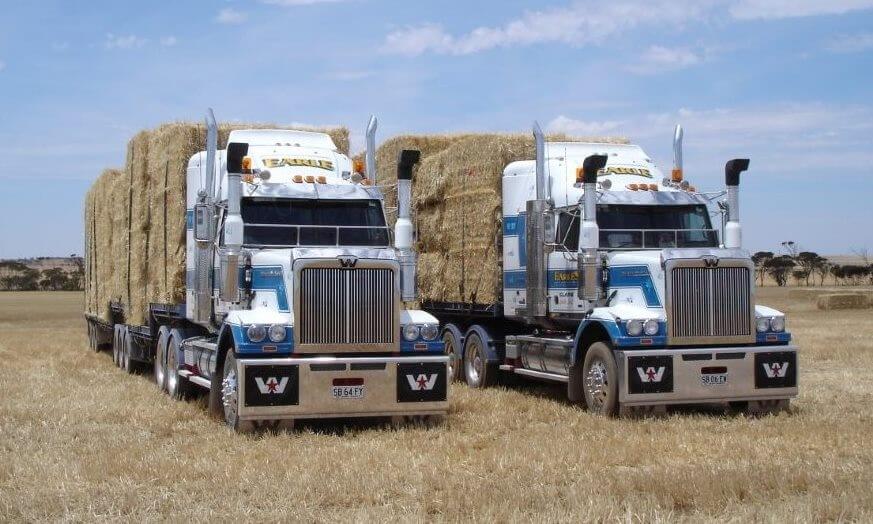How To Make Hay Freight Hassle-Free?
Are you a farmer seeking efficient ways to transport hay to your farm? Welcome to our guide on making hay freight a seamless and stress-free experience. This blog will explore practical tips to streamline the process, ensuring efficient and smooth hay transportation. Whether you're a seasoned agriculturalist or a newcomer to hay freight, our suggestions are tailored to make your transportation endeavours more efficient and effective.
But before we dive into the solutions, let's first examine the typical challenges farmers face in the hay transportation process.

Challenges Farmers Face in Hay Freight
Transporting hay poses a unique set of challenges for farmers, impacting both operational efficiency and the overall quality of the harvested hay. Here are some key challenges faced by farmers in hay freight:
Seasonal Variability:
Weather conditions significantly influence the harvesting and transportation of hay. Adverse weather, such as heavy rainfall, can lead to delays in harvesting and compromise the hay quality.
Transportation Costs:
The increasing fuel and logistics costs can strain a farmer's budget. Rising fuel prices directly impact transportation expenses, making farmers need to seek cost-effective and efficient transportation solutions.
Limited Transportation Options:
Finding reliable carriers for hay can be challenging, especially in regions with limited transportation infrastructure. Farmers may need to explore alternative methods or work collaboratively to secure transportation for their grass.
Regulatory Compliance:
Navigating the complex web of transportation regulations is another hurdle. Farmers must obtain the necessary permits and ensure compliance with legal requirements, adding an administrative layer to the already demanding process of hay freight.
Loading and Unloading Efficiency:
Time-consuming loading and unloading processes can lead to inefficiencies in hay transportation. Streamlining these activities is crucial to minimising downtime and ensuring the timely delivery of hay to its destination. Additionally, farmers who prefer to do everything themselves may need to search for a Telehandler for Hire and a vehicle and labour, which can be time-consuming.
Road Infrastructure:
Inadequate or poorly maintained roads in rural areas can pose a challenge for transporting hay. Farmers may need to adapt their transportation plans for road conditions and limitations.
Risk of Damage During Transit:
Hay is susceptible to damage during transit, mainly if not properly secured or protected from the elements. Mitigating the risk of damage requires strategic loading practices and protective measures during transportation.
How to ship hay in 7 easy steps
Shipping hay efficiently and maintaining its quality throughout transportation is crucial for farmers. Here are seven essential tips to ensure successful hay shipping:
Proper Baling and Storage:
- Ensure hay is baled correctly to maintain its structural integrity during transportation.
- Store bales securely to prevent shifting and damage during transit.
Select Appropriate Transportation Equipment:
- Choose the correct type of trailer and truck based on the quantity and type of hay being transported.
- Ensure that the equipment is well-maintained and suitable for long-distance hauling.
Consider Environmental Factors:
- Account for weather conditions during transportation planning.
- Implement protective measures like tarping to shield hay from rain or adverse weather.
Efficient Loading Practices:
- Maximise space utilisation within the vehicle to optimise load capacity.
- Distribute weight evenly to prevent imbalances and ensure safe transportation.
Secure Proper Permits and Documentation:
- Research and obtain the necessary permits for interstate transportation.
- Keep accurate documentation, including bills of lading and licenses, to ensure regulatory compliance.
Adhere to Regulatory Compliance:
- Familiarise yourself with transportation regulations at local, state, and federal levels.
- Ensure compliance with weight restrictions, transportation hours, and any specific hay transportation regulations.
Monitor and Mitigate Risks:
- Regularly inspect the condition of hay during transportation stops.
- Implement measures to mitigate risks of damage, such as using quality strapping and protective coverings.
Summary:
We've highlighted several common challenges that farmers often encounter during hay shipping and offered practical tips to enhance the overall smoothness of the process. By incorporating these straightforward suggestions, we anticipate that your future attempts in hay freight will be met with even greater success. However, if you need professional guidance, Earl's Transport stands ready to assist. With a dedicated team well-acquainted with the intricacies of the process, they are poised to make the entire transportation journey exceptionally easy and stress-free for you. Don't hesitate to reach out whenever you require expert support in navigating the complexities of hay freight.
